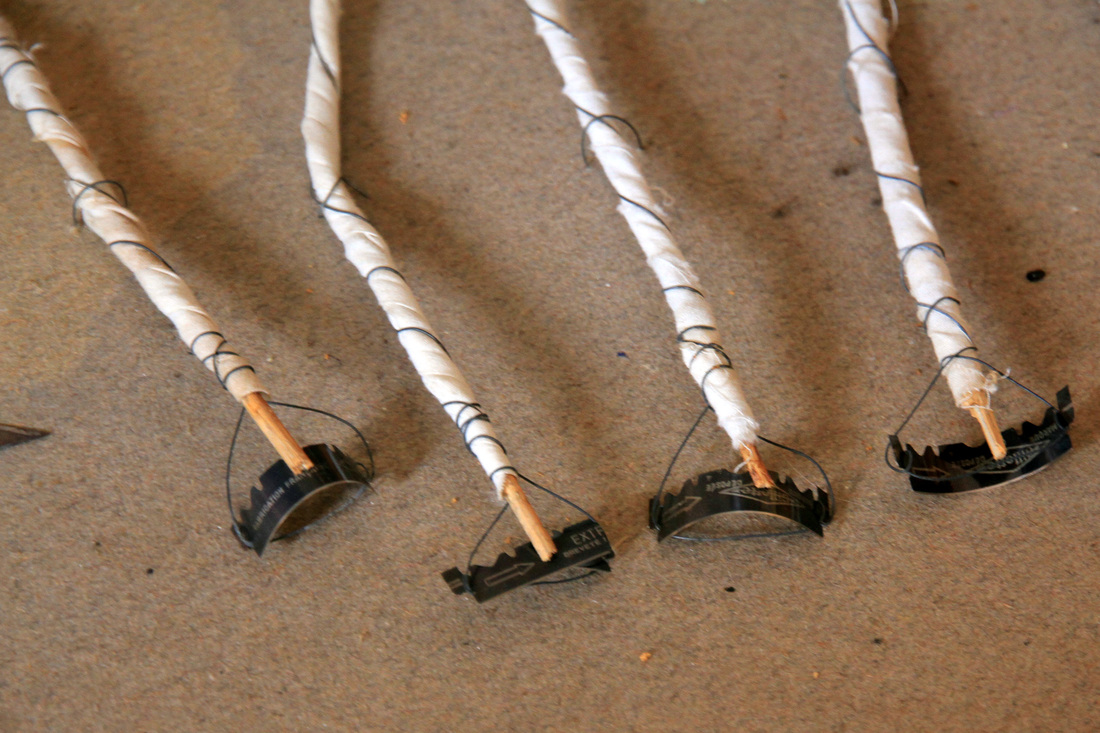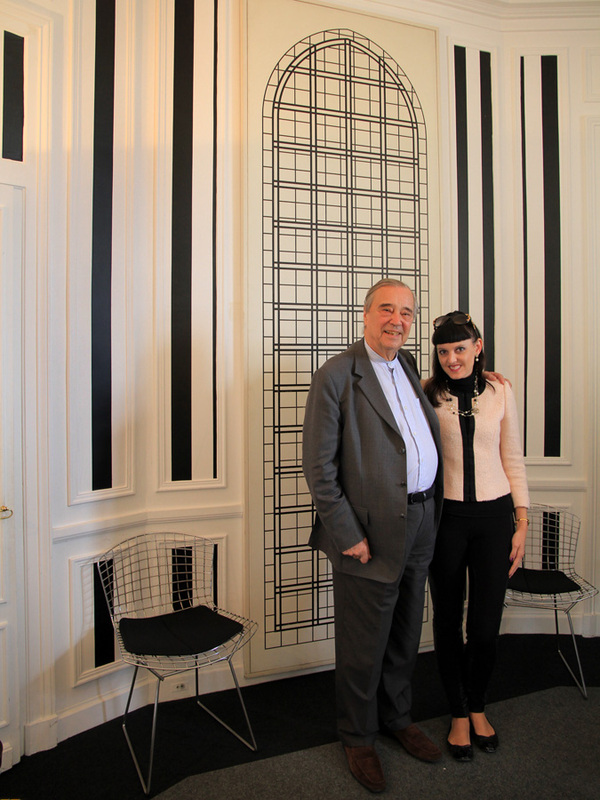CASV International Art Tour, Paris 2014 - In Review
Gilles Fuchs - Private Collection Visit
The CASV is honored to have been taken under the wing of esteemed art collector, Gilles Fuchs. As President of ADIAF (The Association for the International Diffusion of French Art), Mr. Fuchs has generously extended his support for contemporary artists, and French artists in particular, by founding the acclaimed Prix Marcel Duchamp, France’s answer to the U.K.’s Turner Prize. Each year four nominees compete for the Prize, showing together at FIAC in front of an international audience, culminating with a single winner being chosen from a jury of notable figures in the art world, including Fuchs himself. The winner goes on to a solo exhibit by a major French art institution, the Centre Pompidou and receives a sizable financial endowment.
 Rebecca Horn, photo by Holly Marie Armishaw
Rebecca Horn, photo by Holly Marie Armishaw
True to his passion of contemporary art, the private residence of Gilles Fuchs, which we were fortunate to be invited to visit, demonstrates his strong commitment. His collection is vast and diverse, containing works not just of French artists, but many top international artists. Immediately recognizable is a large work by British artists, Gilbert and George. In the den rests a painting by tragic American artist Jean-Michel Basquiat, on the mantle a set of ceramic “animals” by Picasso, a small sculpture by Japanese pop artist Takashi Murakami and another by Chinese artist Chen Zhen, who was then presently showing at Galerie Emmanuel Perrotin in Paris.
Lesser known in Canada, is a work by German artist Rebecca Horn. Horns’ work combines mechanical elements with that of living creatures and often body prosthesis, creating unique hybrid forms. You may have seen her work without even realizing it, as shock-rocker Marilyn Manson has used two of her “wearable sculptures” in his music 1998 video “Dope Show”. Clearly Manson is impressed by her work too, as the title of his best-selling album “Mechanical Animals” seems aptly reminiscent of Rebecca Horn’s work.
In the main room is a piece by critically acclaimed French artist Christian Boltanksi, who represented France in the 2011 Venice Biennale. What first appears to be a coffee table, at closer inspection is a vitrine of curious archived objects and mementos, one of his “Vitrine of Reference” works. As is typical of Boltanski’s unique style, an air of tragedy is evoked in this work. His photo-installations often recall the horrific tragedy of the Holocaust, a personal reminder of his Jewish father and a global reminder of the scars incurred by many countries. Christian Boltanski’s poignant voice still resounds strongly today as one of France’s best artists.
Lesser known in Canada, is a work by German artist Rebecca Horn. Horns’ work combines mechanical elements with that of living creatures and often body prosthesis, creating unique hybrid forms. You may have seen her work without even realizing it, as shock-rocker Marilyn Manson has used two of her “wearable sculptures” in his music 1998 video “Dope Show”. Clearly Manson is impressed by her work too, as the title of his best-selling album “Mechanical Animals” seems aptly reminiscent of Rebecca Horn’s work.
In the main room is a piece by critically acclaimed French artist Christian Boltanksi, who represented France in the 2011 Venice Biennale. What first appears to be a coffee table, at closer inspection is a vitrine of curious archived objects and mementos, one of his “Vitrine of Reference” works. As is typical of Boltanski’s unique style, an air of tragedy is evoked in this work. His photo-installations often recall the horrific tragedy of the Holocaust, a personal reminder of his Jewish father and a global reminder of the scars incurred by many countries. Christian Boltanski’s poignant voice still resounds strongly today as one of France’s best artists.
A collector’s true commitment to their passion for art is often seen in a site-specific installation in one’s home; in this case, a dining room designed by French conceptual artist Daniel Buren. Integrating his bold black and white lines, Buren’s work pairs perfectly with the signature grids of his French contemporary, Jean Pierre Reynaud. Once a part of “La Maison” in la Celle Saint Cloud, a project in the mid-70’d where Reynaud covered an entire house in his signature black and white tiles and later destroyed it because it was “too beautiful”, some of the remnants are now in the private collection of Mr. Fuchs. Beautifully curated, Fuchs dining room seamlessly integrates the works of Buren and Reynaud while complimented by the more obvious, yet also gridded work of Gilbert and George’s “Crazed Growth”.
It is clear that Gilles Fuchs has been collecting art for many years. His patronage, generosity, and time and dedication to promoting contemporary French art are an inspiration. As the grandson of a prominent French family who named their perfumery after their favourite artist, Fuchs must have art collecting in his blood. His advocacy work in promoting French artists continued throughout the CASV Paris Contemporary Art Tour with his support in arranging three studio visits with noted Parisian artists. We are most grateful to have met him.
- Holly Marie Armishaw (June 30th, 2014)





